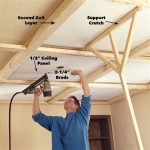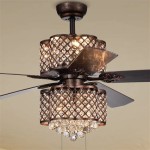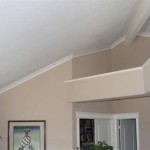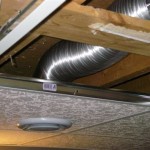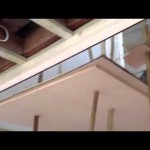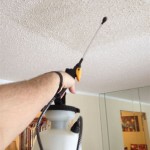How To Hang Acrylic Sheet From Ceiling: A Comprehensive Guide
Acrylic sheets, known for their versatility, durability, and optical clarity, are increasingly utilized in interior design, retail displays, and architectural applications. Suspending acrylic sheets from the ceiling offers a distinctive way to create partitions, signage, light diffusers, or decorative elements. Implementing this installation requires careful planning, appropriate materials, and adherence to safety protocols. This article details a comprehensive approach to hanging acrylic sheets from the ceiling, outlining the necessary steps and considerations for a successful outcome.
Understanding Acrylic Sheet Properties and Weight Considerations
Before initiating the installation process, a thorough understanding of acrylic sheet properties is crucial. Acrylic, also known as polymethyl methacrylate (PMMA), is a thermoplastic known for its high impact resistance compared to glass, excellent light transmission, and relative lightweight nature. Despite being lighter than glass, acrylic sheets still possess weight that must be accounted for when determining the appropriate hanging hardware and support structure.
The weight of an acrylic sheet is directly proportional to its thickness and surface area. A thicker and larger sheet will naturally weigh more. Calculating the weight is essential to select hanging hardware with an adequate load-bearing capacity. Manufacturers typically provide weight specifications per square foot for varying thicknesses of acrylic sheets. Utilizing this information, the installer can accurately estimate the total weight of the acrylic sheet to be suspended.
It is paramount to choose hardware that significantly exceeds the estimated weight of the acrylic sheet. A safety factor of at least 2:1, meaning the hardware's load capacity is at least twice the weight of the acrylic sheet, is generally recommended. This buffer accounts for any unforeseen stress, potential dynamic loads (e.g., wind or movement), and ensures the long-term stability and safety of the installation.
Furthermore, considering the ceiling structure is vital. Determining the type of ceiling (e.g., drywall, concrete, suspended ceiling) will dictate the type of anchors and fasteners required to securely attach the hanging hardware. Drywall ceilings, for instance, require specialized anchors designed to distribute weight effectively, while concrete ceilings necessitate the use of concrete screws or expansion anchors. Suspended ceilings may require a different approach, potentially involving support from the structural ceiling above the suspended grid.
Selecting Appropriate Hanging Hardware and Tools
The selection of appropriate hanging hardware is critical for the aesthetic appeal and structural integrity of the installation. Several options are available, each offering a unique aesthetic and functionality. The choice will depend on factors such as the desired visual effect, the weight of the acrylic sheet, and the type of ceiling.
Cable suspension systems are a popular choice for hanging acrylic sheets. These systems typically consist of stainless steel cables, adjustable cable grippers, and ceiling anchors. The cables provide a clean and modern aesthetic, while the adjustable grippers allow precise height adjustments, ensuring the acrylic sheet is perfectly level. Cable suspension systems are well-suited for applications where a minimalist and unobtrusive look is desired.
Chain suspension systems offer a more industrial or decorative appearance. Chains can be made from various materials, such as steel, brass, or aluminum, and come in different styles and finishes. Chain suspension systems provide a robust and reliable method for hanging heavier acrylic sheets. The length of the chains can be adjusted by removing or adding links, allowing for flexibility in height adjustment.
Rod suspension systems provide the most rigid and stable support. These systems typically consist of solid metal rods, threaded connectors, and ceiling mounts. Rods offer a clean and linear aesthetic and are ideal for applications where minimal sway or movement is desired. Rod suspension systems are often used in retail displays or architectural installations where precision and stability are paramount.
In addition to the suspension system itself, the method of attaching the acrylic sheet to the hardware is crucial. One common approach involves drilling holes in the acrylic sheet and using standoffs or mounting screws. Standoffs create a space between the acrylic sheet and the ceiling, providing a clean and professional appearance. Mounting screws, in conjunction with washers, can be used to directly attach the acrylic sheet to the hanging hardware. Proper hole preparation is essential to prevent cracking or chipping the acrylic sheet; utilizing drill bits specifically designed for acrylic and applying gentle pressure at low speed is recommended. Another method is using edge grips or clamps, which attach to the edge of the acrylic sheet without requiring drilling. These are particularly useful for maintaining the sheet's pristine surface.
Essential tools for hanging acrylic sheets include a drill, drill bits (specifically for acrylic), a level, a measuring tape, a pencil, safety glasses, gloves, and appropriate screwdrivers or wrenches for tightening fasteners. A stud finder may be necessary to locate ceiling joists for secure anchor placement, especially in drywall ceilings. For cutting acrylic sheets or creating holes, using proper protective gear like safety goggles is imperative to prevent injury from flying shards.
Installation Process: Step-by-Step Guide
The installation process requires careful planning and execution to ensure a safe and aesthetically pleasing result. This section outlines a step-by-step guide to hanging acrylic sheets from the ceiling.
Step 1: Planning and Layout. Before starting the installation, meticulously plan the placement of the acrylic sheet. Measure the desired location and mark the positions of the ceiling anchors. Use a level to ensure the marks are aligned and that the acrylic sheet will hang straight. Account for any potential obstructions, such as light fixtures or HVAC vents. Accurately measuring and marking the location for your hanging points is crucial to ensure the acrylic sheet hangs evenly and at the correct height.
Step 2: Preparing the Acrylic Sheet. If holes are required for attaching the hanging hardware, carefully drill them in the acrylic sheet. Use a drill bit specifically designed for acrylic, and apply gentle pressure at low speed to prevent cracking or chipping. Deburr the edges of the holes to ensure a smooth finish. If edge grip methods are used, ensure the grip capacity aligns with the acrylic sheet’s thickness.
Step 3: Installing Ceiling Anchors. Based on the ceiling type, select and install the appropriate ceiling anchors. For drywall ceilings, use drywall anchors with sufficient load-bearing capacity. For concrete ceilings, use concrete screws or expansion anchors. For suspended ceilings, consult with a structural engineer or experienced contractor to determine the appropriate support method. Follow the manufacturer's instructions for installing the anchors. Ensuring that the anchors are securely fastened to the ceiling structure is paramount for safety and stability.
Step 4: Attaching the Hanging Hardware. Attach the suspension cables, chains, or rods to the ceiling anchors. Ensure the connections are secure and that the hanging hardware is properly aligned. If using cable suspension systems, adjust the cable grippers to the desired height. If using chains, adjust the length by removing or adding links. If using rods, tighten the threaded connectors to secure the rods to the ceiling mounts.
Step 5: Hanging the Acrylic Sheet. Carefully lift the acrylic sheet and attach it to the hanging hardware. If using standoffs or mounting screws, align the holes in the acrylic sheet with the suspension system and secure them with screws and washers. If using edge grips, carefully clamp the grips onto the edges of the acrylic sheet and attach them to the hanging hardware. Confirm that all connection points are secure and that the acrylic sheet is hanging straight and level.
Step 6: Final Adjustments and Inspection. Once the acrylic sheet is hung, make any necessary adjustments to ensure it is perfectly level and aligned. Use a level to verify the horizontal and vertical alignment. Check all connections to ensure they are secure. Inspect the installation thoroughly for any signs of stress or instability. Make sure that the acrylic sheet is not rubbing against any surrounding objects or structures. Any pressure points can cause stress fractures over time.
Step 7: Clean Up. Clean the acrylic sheet to remove any fingerprints, dust, or smudges. Use a soft cloth and a mild acrylic cleaner to avoid scratching the surface. Dispose of all waste materials and packaging responsibly.
By following these steps diligently, a successful and aesthetically pleasing installation of acrylic sheets from the ceiling can be achieved. Safety should always be the top priority, and consulting with a qualified professional is recommended if there are any uncertainties or concerns.

How To Hang Acrylic Sheets As Hanging

Painting Prep How To Hang Plastic From The Ceiling

Plastic Shield Hanging Kit T Bar Suspension Covid 19 Protective

Fastening And Laying Plexiglas

How To Install Ceiling Panels The Panel Company

How To Install Plastic Ceiling Panels A Diy Guide

How To Install Plastic Ceiling Panels A Diy Guide

Sneeze Guard To Protect Our Employees And Customers As Hanging

Ways To Hang Acrylic Frames On Wall Nova Display Systems

How To Install A Pvc Ceiling Cladding Guide
Related Posts

